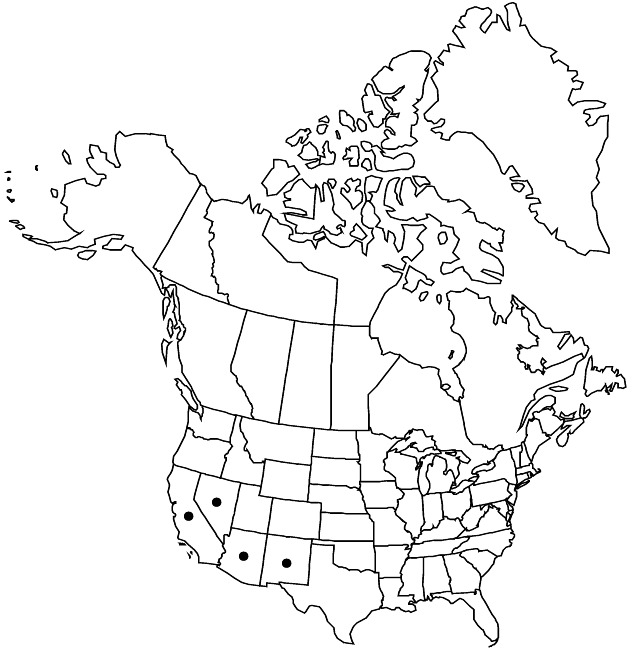Malacothrix stebbinsii
Madroño 16: 265, fig. 2e. 1962.
Annuals, 5–60 cm. Stems 1–5+, ± erect, branched distally, sparsely leafy, glabrous. Cauline leaves: proximal obovate, pinnately lobed (lobes 3–5+ pairs, triangular to oblong or linear), not fleshy, ultimate margins entire or dentate, faces glabrous; distal reduced (usually with 2 lobes near bases). Calyculi of 5–8+, ovate to lanceolate bractlets, hyaline margins 0.05–0.2 mm. Involucres ± campanulate, 7–10 × 3–6 mm. Phyllaries 16–20+ in 2–3 series, lanceolate to lance-linear, hyaline margins 0.05–0.1 mm wide, faces glabrous. Receptacles not bristly. Florets 19–70; corollas usually yellow, sometimes white, 6–7 mm; outer ligules exserted 1–2 mm. Cypselae ± cylindro-fusiform, 1.7–2.3 mm, ribs extending to ca. 0.1–0.2 mm short of apices (minutely hirtellous or muriculate), ± equal (distal 0.1–0.2 mm of cypselae smooth); pappi persistent, of 8–15+, needlelike teeth plus 1 (–2) bristles. Pollen 70–100% 4-porate. 2n = 28.
Phenology: Flowering Mar–Jun.
Habitat: Gravelly soils beneath shrubs, along ditches, near streams, in sagebrush steppes, creosote bush scrublands
Elevation: 300–1300 m
Distribution

Ariz., Calif., Nev., N.Mex., Mexico (Sonora)
Discussion
Malacothrix stebbinsii grows in the Mojave Desert (Borrego area, California) and the Sonoran Desert (Santa Catalina, Mazatzal, Baboquivari, and Santa Rita mountains, and elsewhere in Arizona).
Selected References
None.
Lower Taxa
"fine" is not a number."]" is not declared as a valid unit of measurement for this property.